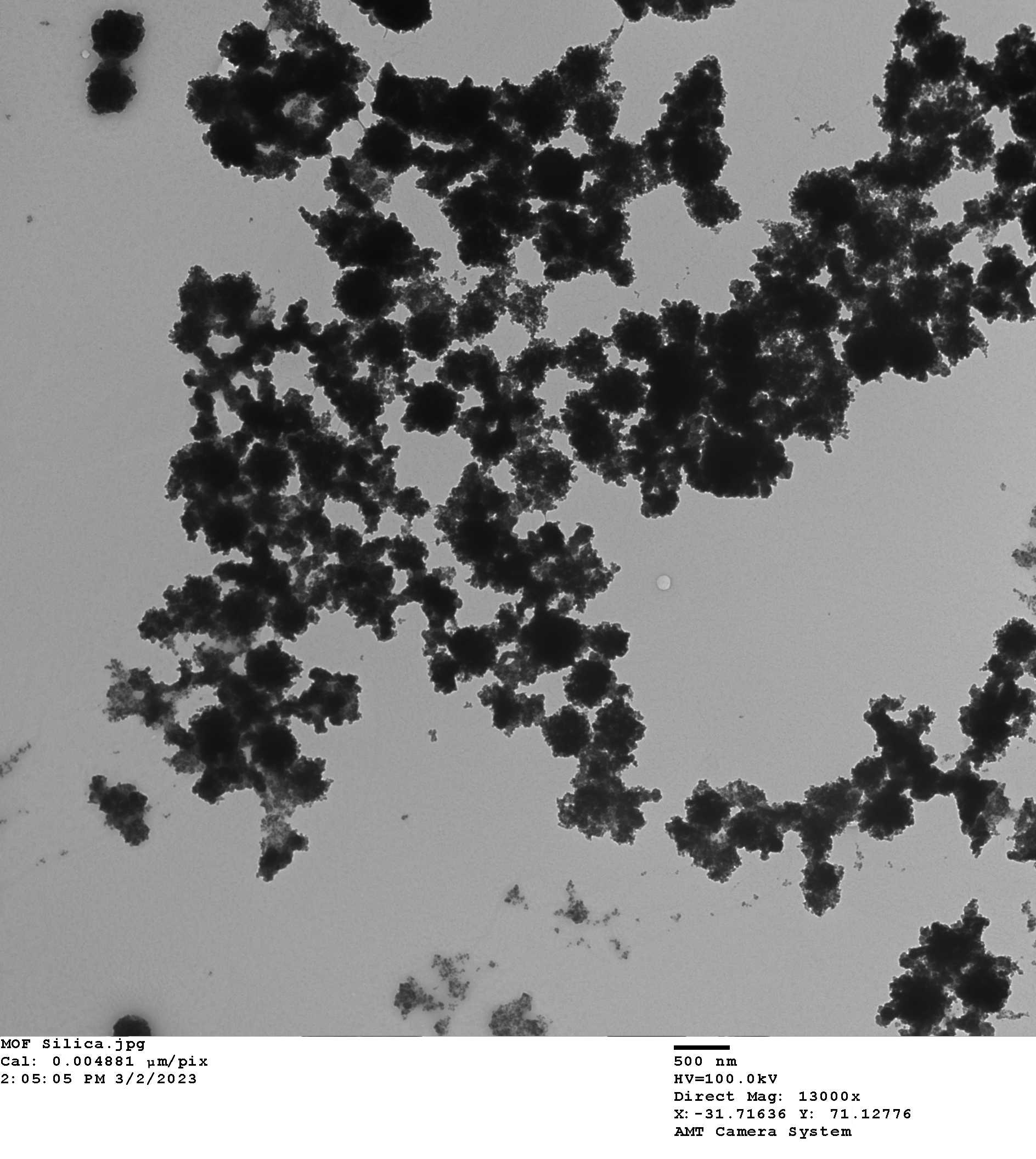All About Copper MOF Nanoparticles
Definition, Properties and Applications
Copper metal-organic framework (Cu-MOF) nanoparticles have garnered significant attention due to their versatile applications in various fields. These nanoparticles have been extensively studied for their potential in drug delivery, catalysis, sensing, and electrochemical applications. The unique properties of Cu-MOF nanoparticles, such as tunable surface chemistry, high porosity, and biocompatibility, make them promising candidates for a wide range of applications.
In the field of drug delivery, Cu-MOF nanoparticles have shown promise in enhancing drug delivery systems. The size, shape, and surface chemistry of these nanoparticles can be tailored to improve drug penetration into targeted tissues without compromising the activity of the loaded drug (Ejsmont et al., 2023). Additionally, the presence of copper in MOFs has been identified as advantageous for bio-applications, including drug delivery (Aguila-Rosas, 2023). Furthermore, the use of Cu-MOF nanoparticles as a carrier for drugs such as ibuprofen has been explored, demonstrating the potential of these nanoparticles in pharmaceutical applications (Inbasekar et al., 2022).
In catalytic applications, Cu-MOF nanoparticles have been investigated for their electrocatalytic properties. For instance, small-sized copper nanoparticles embedded in MOFs have been utilized as catalysts for the electrocatalytic hydrogen evolution reaction, highlighting their potential in energy-related applications (Aparna, 2023). Moreover, Cu-MOF nanoparticles have been employed as electrocatalysts for CO2 reduction, demonstrating their competence in catalyzing important chemical reactions (Kung et al., 2017).
The potential of Cu-MOF nanoparticles in sensing applications has also been explored. It has been observed that the presence of copper sites in 2D MOFs is critical for ammonia sensing, indicating the tunability of functional properties of conductive MOFs through rational design and synthesis (Campbell et al., 2015).
Furthermore, the use of Cu-MOF nanoparticles in electrochemical applications has been investigated. These nanoparticles have been utilized in the generation of grain boundary-rich copper nanocatalysts for CO2-to-C2+ electroconversion, showcasing their potential in electrochemical processes (Kim et al., 2023). Additionally, copper azide nanoparticles encapsulated in MOF-derived porous carbon have been prepared for high-performance primary explosive film, demonstrating the diverse applications of Cu-MOF nanoparticles in energetic materials (Yu et al., 2022).
In summary, Cu-MOF nanoparticles exhibit a wide range of applications, including drug delivery, catalysis, sensing, and electrochemical applications. Their tunable properties, high porosity, and biocompatibility make them promising candidates for various technological advancements.
Go here for Nanopartz Copper MOF Nanoparticles
References:
Aguila-Rosas, J. (2023). Copper(ii)-mofs for bio-applications. Chemical Communications, 59(79), 11753-11766. https://doi.org/10.1039/d3cc03146b
Aparna, R. (2023). Copper nanoparticle-embellished zr-based metal–organic framework for electrocatalytic hydrogen evolution reaction. Chemical Communications, 59(69), 10444-10447. https://doi.org/10.1039/d3cc03294a
Campbell, M., Sheberla, D., Liu, S., Swager, T., & Dincă, M. (2015). Cu3(hexaiminotriphenylene)2: an electrically conductive 2d metal–organic framework for chemiresistive sensing. Angewandte Chemie, 54(14), 4349-4352. https://doi.org/10.1002/anie.201411854
Ejsmont, A., Warowicka, A., Broniarczyk, J., & Gościańska, J. (2023). The synergistic effect of cu-mof nanoparticles and immunomodulatory agent on sars-cov-2 inhibition. Chemical Communications, 59(33), 4907-4910. https://doi.org/10.1039/d3cc00894k
Inbasekar, C., Akshaya, A., & Fathima, N. (2022). Facile synthesis of copper‐5‐aminoisophthalic acid metal organic framework as a potential drug carrier for ibuprofen. Chemistryselect, 7(37). https://doi.org/10.1002/slct.202202253
Kim, S., Shin, D., Park, J., Jung, J., & Song, H. (2023). Grain boundary‐rich copper nanocatalysts generated from metal‐organic framework nanoparticles for co2‐to‐c2+ electroconversion. Advanced Science, 10(9). https://doi.org/10.1002/advs.202207187
Kung, C., Audu, C., Peters, A., Noh, H., Farha, O., & Hupp, J. (2017). Copper nanoparticles installed in metal–organic framework thin films are electrocatalytically competent for co2 reduction. Acs Energy Letters, 2(10), 2394-2401. https://doi.org/10.1021/acsenergylett.7b00621
Yu, C., Zhang, W., Xian, M., Wang, J., Chen, J., Chen, Y., … & Zhu, J. (2022). Copper azide nanoparticle‐encapsulating mof‐derived porous carbon: electrochemical preparation for high‐performance primary explosive film. Small, 18(13). https://doi.org/10.1002/smll.202107364

